Giovanni Pistucci
NAPLES, c. 1930
$25,000–40,000
More than any other regional school, the Neapolitan tradition of violin making has a long and colorful history of copying the work of previous generations. Whether for financial gain or for sport, nearly every serious Neapolitan maker since the mid-19th century imitated to some degree those who came before them. Makers such as Vincenzo Sannino, Alfonso Delle Corte, Vittorio Bellarosa and Giovanni Pistucci routinely labeled their new instruments as the work of earlier generations.
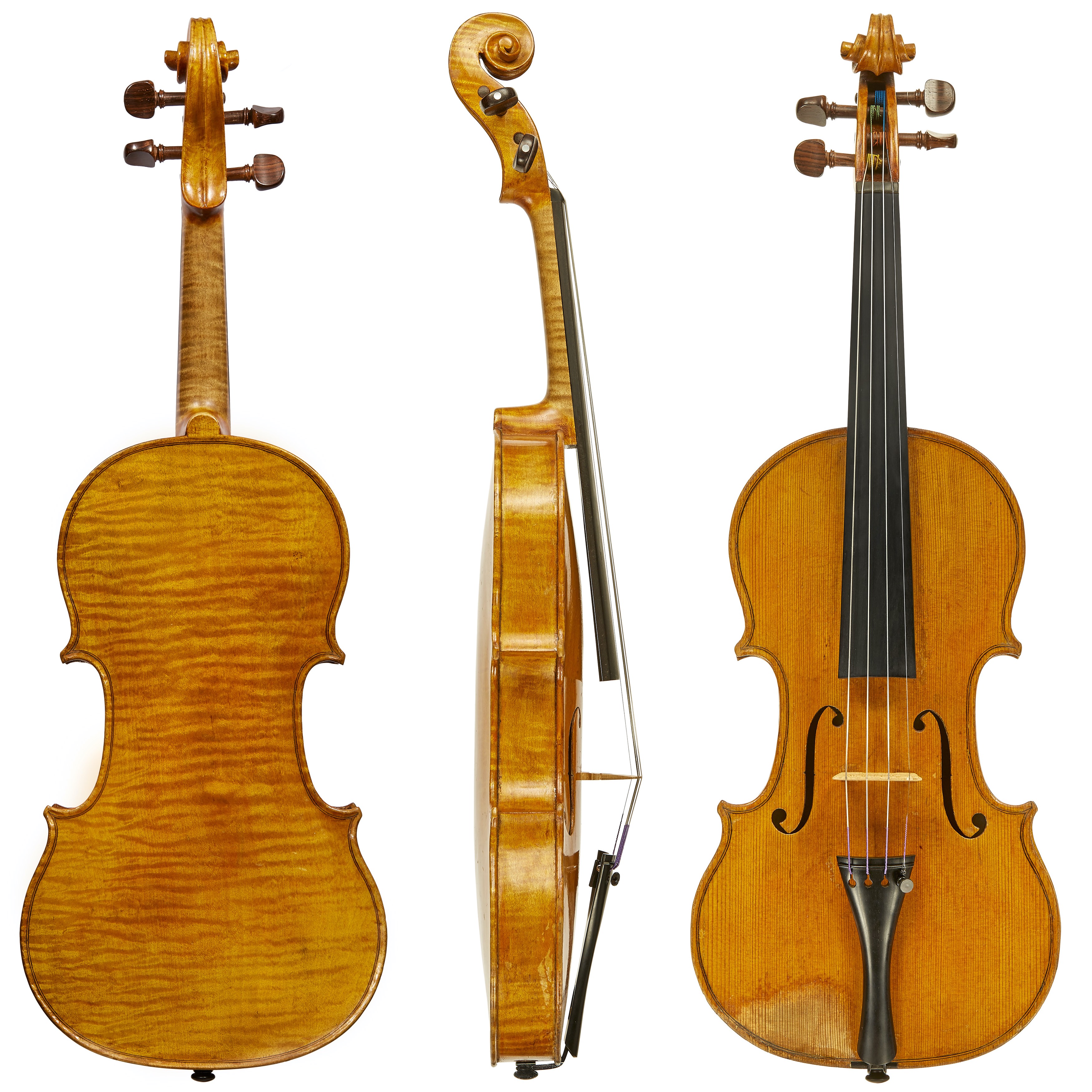
This spirited violin by Giovanni Pistucci dating from c. 1930 is made as a copy of Raffaele and Antonio Gagliano and labeled as such. The model is a typical Gagliano pattern with square, parallel C-bouts, short lower corners and ample, rounded bouts. The maple on the back is cut partially on the slab, which yields soft but regular flame patterns not unlike those seen on instruments by Raffaele and Antonio. The label, almost certainly original to the instrument and added by the maker, is a facsimile of Raffaele and Antonio.
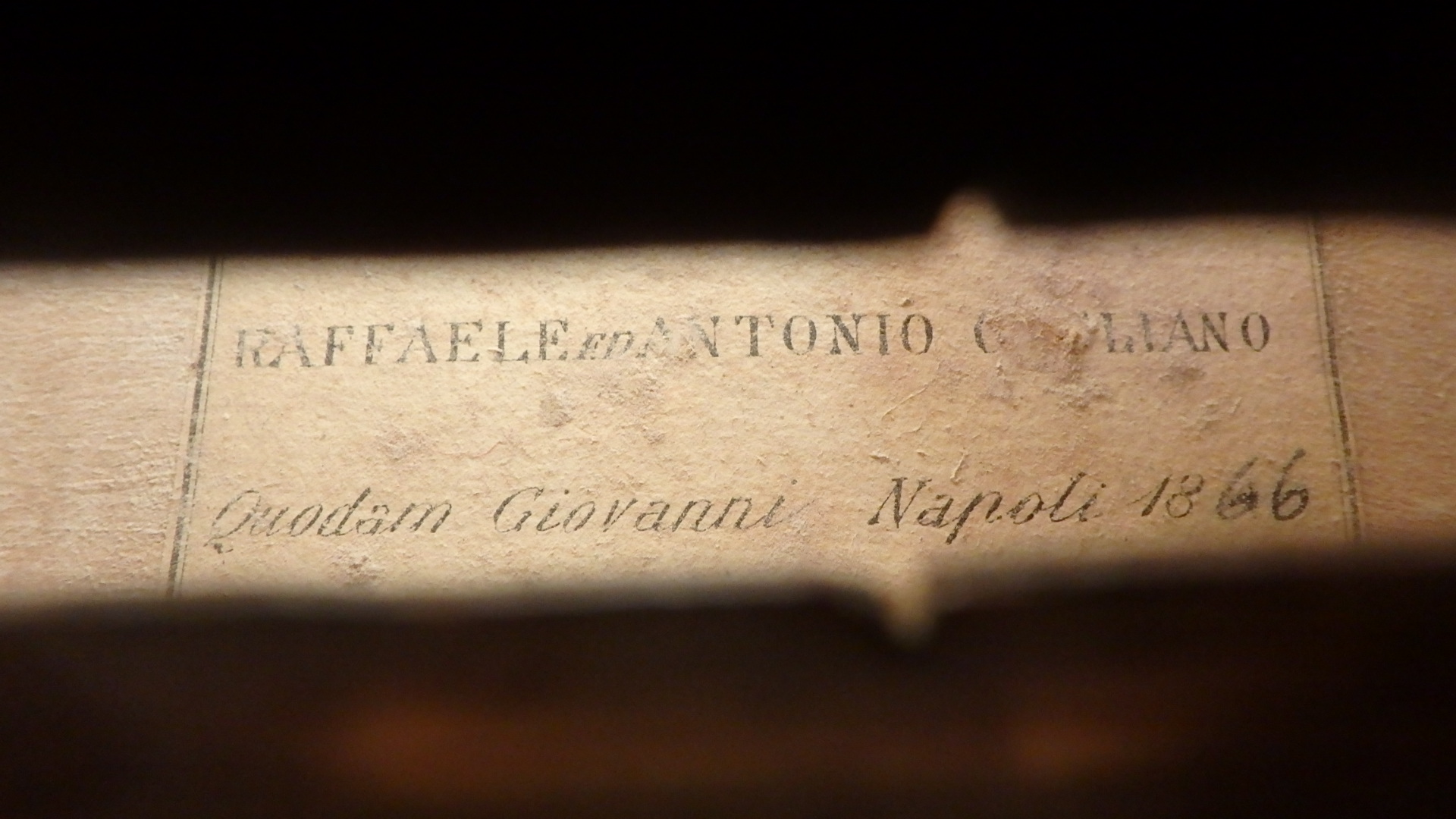
The front of this violin is particularly animated with the treble soundhole a full 3 mm lower than the bass. The diameters of the upper and lower holes are nearly the same. The stems are graceful and flowing but give the impression of being hastily finished, as do the wings, which are scooped with a single gouge stroke and then scraped or sanded to blend. The notches are exceptionally small and set to a correct stop-length of 195 mm irrespective of their position on the soundhole itself.

The blacks of the purfling are narrow strips of dyed fiber, either a plant husk or a dyed cellulose paper. This is a common feature of many Neapolitan instruments since the late 18th century. The black fiber strands appear fine and slender, giving the purfling sharp definition. The middle strip in Neapolitan purfling is typically made of beech.
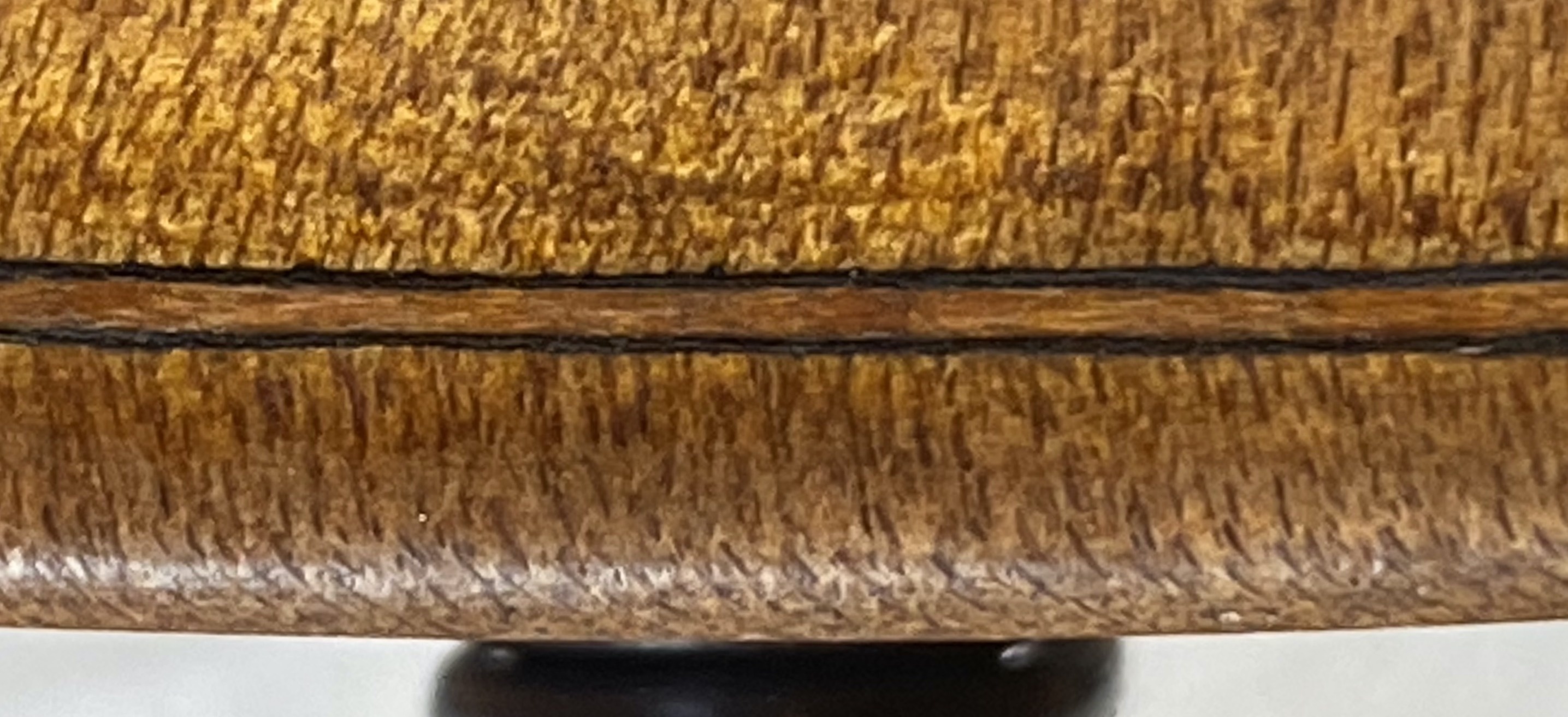
The internal linings are also made of beech and are hastily trimmed. The corner blocks are made of spruce.
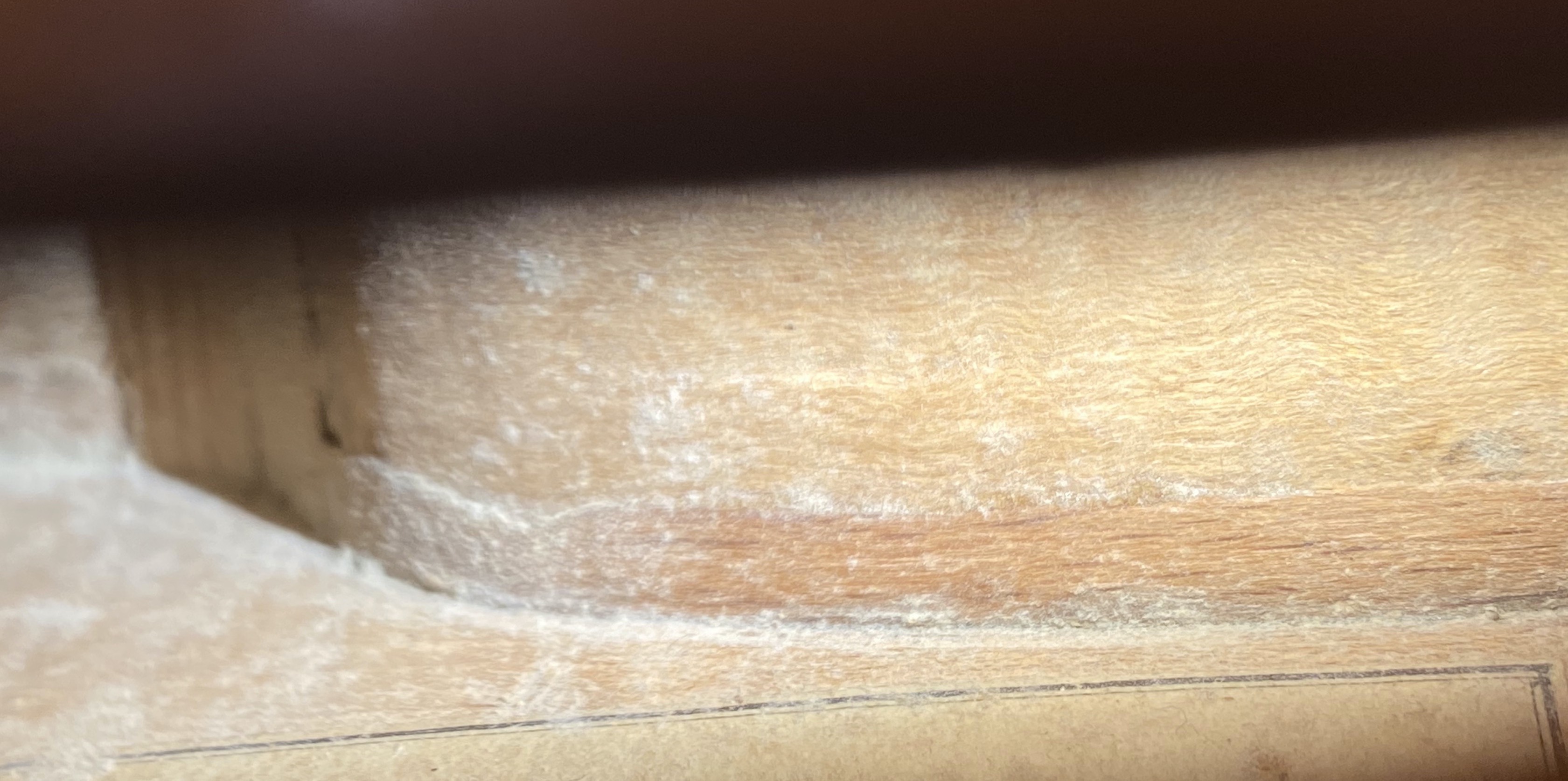
Perhaps the most capricious element of this instrument is its scroll. Here, the maker has interpreted a typical Neapolitan model with a surprising free-wheeling spontaneity. When viewed from the front, the two halves of the volute are remarkably asymmetrical. The back of the scroll is deeply fluted and hastily scraped, and the general impression is one of rustic and compelling charm.
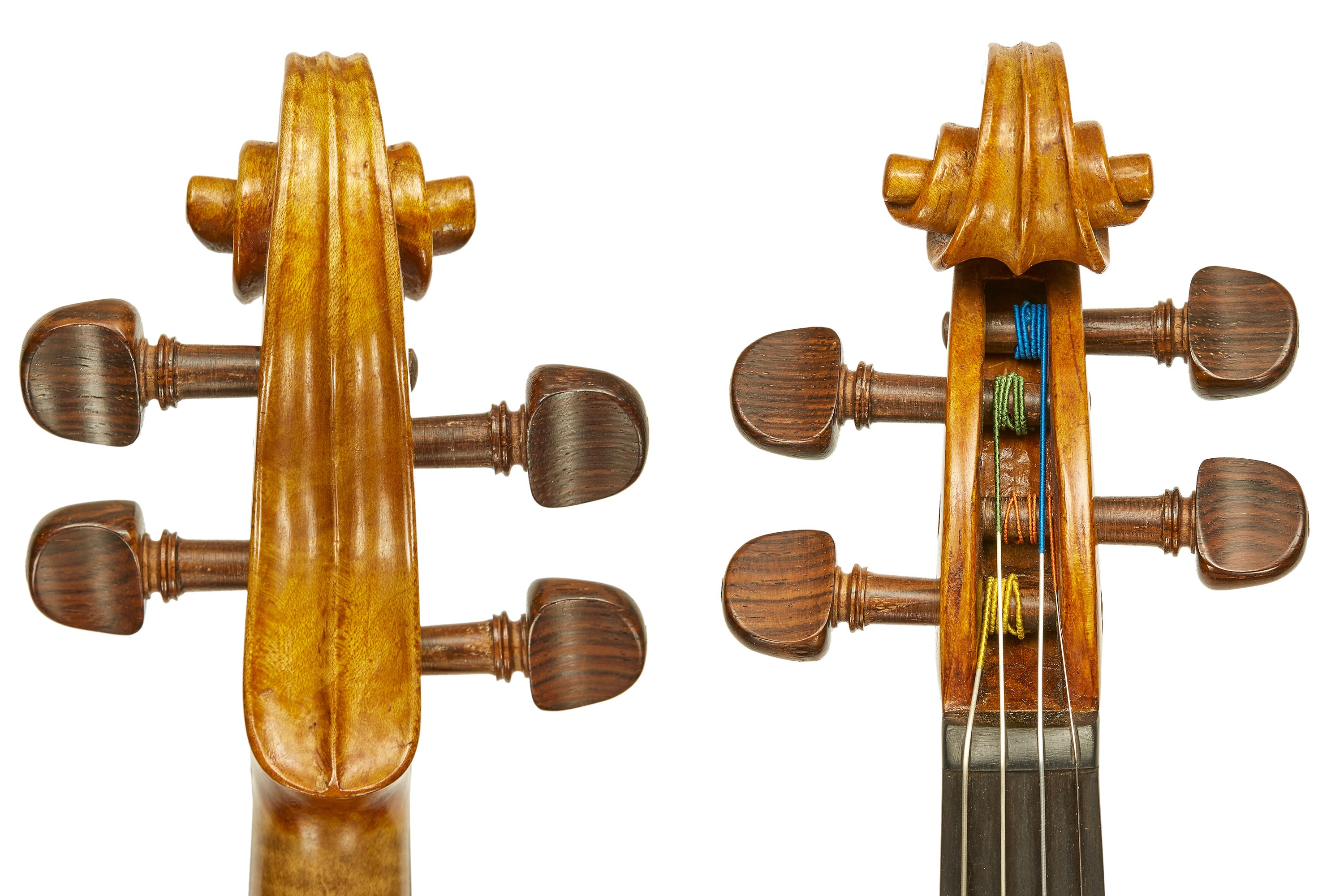
The varnish is a rich yellow-brown color set on a golden ground, similar to that used by Raffaele and Antonio. Like many fine Neapolitan instruments there is a distinctive undertone of olive-brown in the ground. – Jason Price
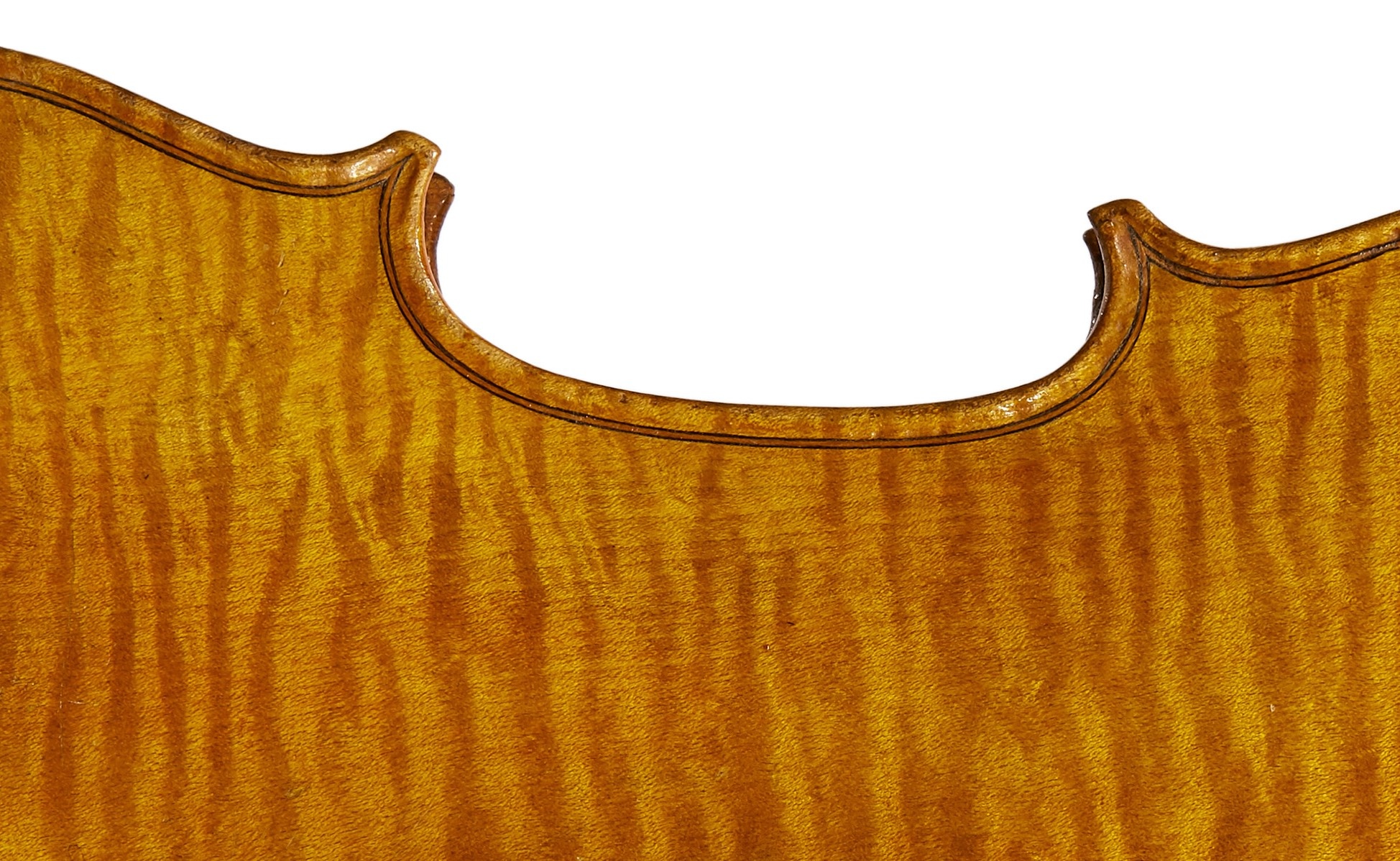
This violin is Lot 7 in our GiveBack auction. View lot.